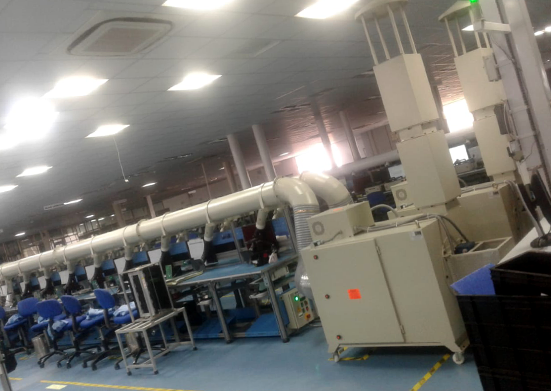In recent years, the topic of air quality has ascended the ladder of global concern, paralleling the rise in awareness about environmental health and sustainability. This awareness has spotlighted the significance of air pollution control mechanisms, such as fume extractors, dust collectors, and mist collectors, in mitigating the detrimental effects of airborne particles on human health. This article delves into the often-understated impacts of these particles and explores effective strategies and technologies for maintaining cleaner air.
Airborne particles, tiny and often invisible, pose a significant health risk. These particles, ranging from dust and pollen to more harmful substances like chemical fumes and industrial emissions, infiltrate our respiratory system, often leading to a host of health issues. The World Health Organization has identified air pollution as the single largest environmental health risk, highlighting the urgency for effective air pollution control measures.
Poor air quality can impact your health adversely with significant long-term issues. Prolonged exposure to polluted air can lead to respiratory diseases such as asthma, bronchitis, and even lung cancer. It also exacerbates cardiovascular diseases and can have adverse effects on the neurological system and skin health. Vulnerable populations, including children, the elderly, and those with preexisting health conditions, are particularly at risk.
Advancements in air pollution control technologies have been pivotal in reducing the concentration of harmful airborne particles. Devices such as fume extractors, dust collectors, and mist collectors play a crucial role in various industries, capturing a wide range of airborne contaminants at the source. Their importance cannot be overstated, especially in industrial settings where the emission of particulate matter is significant.
- Fume Extractors: Guardians Against Chemical Pollutants
Fume extractors are essential in environments where chemical fumes are prevalent. These devices are designed to capture fumes at the source, preventing them from dispersing into the workplace and the wider environment. This not only protects the health of workers but also contributes to broader air quality improvement efforts.
- Dust Collectors: Combatting Particulate Matter
Dust collectors are another vital tool in the fight against air pollution. Employed in numerous industrial and commercial settings, these systems efficiently capture dust particles, thereby significantly reducing the amount of dust released into the air. This reduction is critical, as dust particles are among the most common and harmful airborne contaminants.
- Mist Collectors: Clearing Industrial Mists
In industries where oil mist or coolant mist is generated, mist collectors are indispensable. These specialized systems are engineered to capture and filter out these mists, which can be harmful if inhaled or left to accumulate in the workplace. By controlling these mists, mist collectors not only improve air quality but also enhance workplace safety and efficiency.
The field of air quality management continues to evolve, with ongoing innovations in technology and strategies. Smart air monitoring systems, for instance, are being integrated into pollution control systems, providing real-time data and enabling more efficient and proactive management of air quality.
While technology plays a crucial role, effective policy and heightened public awareness are equally important. Regulations and guidelines governing emissions and air quality standards are critical in driving the adoption of pollution control technologies. Public awareness campaigns also play a pivotal role in educating people about the health impacts of air pollution and the importance of air quality management.
The silent impact of airborne particles on health is a pressing issue that demands concerted efforts from individuals, industries, and governments. Technologies such as fume extractors, dust collectors, and mist collectors are at the forefront of these efforts, offering efficient solutions to mitigate the harmful effects of air pollution. As we advance, the integration of innovative technologies, supportive policies, and public engagement will be key in ensuring cleaner, healthier air for future generations.





